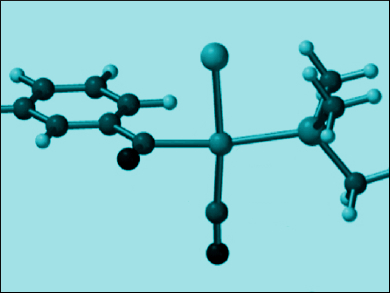The synthesis of complex CO-containing molecules has gained much interest in recent years due to the development of palladium-catalyzed carbonylation reactions. The research in this area has led to more active palladium catalysts, alternative and less harmful sources of CO, and the efficient construction of value-added products. The mechanism of the reaction, however, has not been fully understood, specifically for sterically demanding phosphine ligands.
Edward N. Brothers, Ashfaq A. Bengali, Texas A&M at Qatar, Doha, Qatar, Bruce A. Arndtsen, McGill University, Montreal, Canada, and colleagues have used a computational approach to determine a plausible catalytic cycle for the palladium-catalyzed carbonylation of aryl iodides with monodentate phosphine ligands.
The team showed that a synergistic role exists between CO and the bulky PtBu3 ligand that allows for reductive elimination of the Pd-acyl chloride complex to occur more easily. The structure of the phosphine was determined to be key for CO incorporation and generation and for the stability of a high energy Pd intermediate; other ligands did not favor formation of the product, whereas PtBu3 did.
The researchers found the aryl iodide oxidative addition to be the rate determining step in the catalytic cycle. According to the team, the demonstrated influences of PtBu3 and CO could also be applicable to other carbonylative transformations in which reductive elimination plays an important role.
- Computational Study of the Palladium-Catalyzed Carbonylative Synthesis of Aromatic Acid Chlorides: The Synergistic Effect of PtBu3 and CO on Reductive Elimination,
Jeffrey S. Quesnel, Salvador Moncho, Kai E. O. Ylijoki, Gerardo Martin Torres, Edward N. Brothers, Ashfaq A. Bengali, Bruce A. Arndtsen,
Chem. Eur. J. 2016.
DOI: 10.1002/chem.201602890




